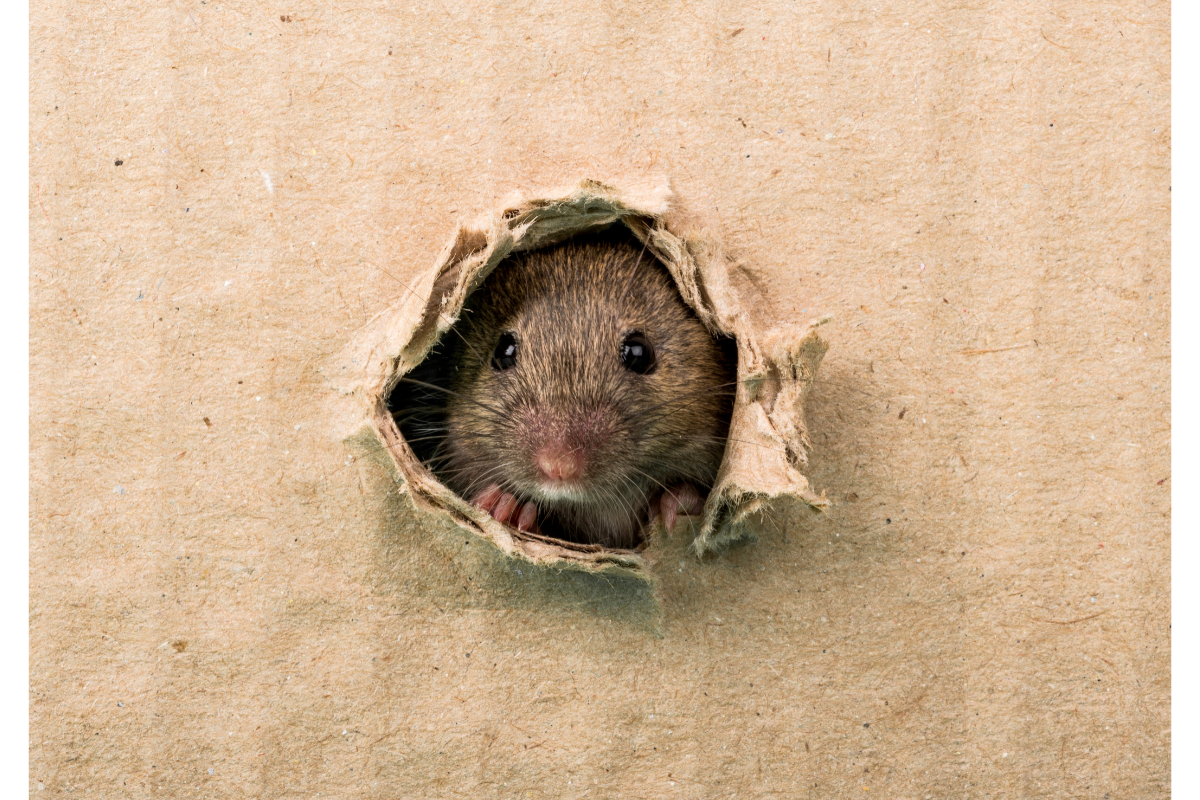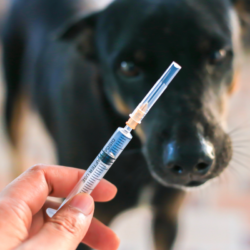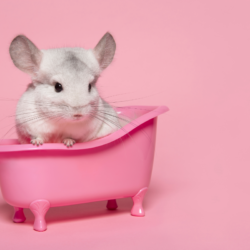Streptobacillosis, often referred to as rat-bite fever, is a zoonosis caused by the bacterium Streptobacillus moniliformis. Although rare, this infection can have serious consequences for both animals and humans. In this article, we explore in detail the characteristics of this disease, its mode of transmission, symptoms in humans and animals, and methods of diagnosis, treatment and prevention.
What is the infectious agent responsible?
Rat-bite fever is a zoonosis caused by the bacterium Streptobacillus moniliformis, transmitted to humans by rat bites or scratches. A variant of this disease, sodoku, is caused by Spirillum minus. Streptobacillus moniliformis is a bacterium usually found in the oral cavity and upper respiratory tract of rats, but it can also act as an opportunistic pathogen in its host. In humans, this bacterium is responsible for streptobacillosis or Haverhill fever.
Streptobacillus moniliformis is a gram-negative bacillus 0.1-0.7 µm in diameter and 1-5 µm long. This bacterium has a variable morphology and may show a central bulge. It is immobile and often forms chains and filaments. As a commensal rat bacterium, S. moniliformis is isolated from the nasopharynx, pharynx, trachea and middle ear. Between 10 and 100% of rats are healthy carriers of this germ, although the rate of carriage varies according to the authors because of the difficulty of isolating it.
Phenotypically, S. moniliformis is a catalase-, oxidase-, indole- and urease-negative bacterium that is facultatively aero-anaerobic. It ferments a wide range of carbohydrates and alcohols, producing acids but no gases. However, fermentation of fructose, maltose, mannose, salicin, lactose, sucrose, trehalose and xylose varies according to the substrate. The fatty acid profile of S. moniliformis shows tetradecanoic (C14:0), palmitic (C16:0), stearic (C18:0), oleic (C18:1) and linoleic (C18:2) acids.
Growing S. moniliformis requires a humid environment or semi-soft agar plates with serum, ascites or blood. A CO2-enriched or micro-aerophilic atmosphere and a temperature of 35-37°C produce colonies after three days. Colonies are convex, greyish, smooth, circular and generally non-haemolytic.
How does this disease manifest itself in animals?
Streptobacillosis mainly affects rats, although other rodents such as mice, guinea pigs, gerbils and squirrels can also be infected. Streptobacillus moniliformis is found throughout the world, and is transmitted mainly by close contact or biting, via the saliva of infected rats, which frequently carry the bacteria in their oral cavity.
In rats and other rodents, infection is generally inapparent, meaning that animals carrying the bacteria often show no obvious clinical signs of the disease. However, in some cases, especially in mice, severe forms of the disease can develop. Severe symptoms include respiratory infections, otitis media, conjunctivitis and pneumonia, often in association with other pathogens such as pasteurella or mycoplasma.
Rats carrying S. moniliformis play a crucial role in spreading the disease to humans and other animals. Both domestic and wild rodents can be reservoirs of infection, posing risks to handlers and other animals in close contact with them. Squirrels, although less common as vectors, can also play a role in the transmission of infection, especially in areas where they come into contact with populations of infected rats.
The presence of S. moniliformis in rodents and other infected animals is therefore a major public health problem, requiring rigorous prevention and control measures to minimise the risk of transmission of the bacterium to humans and other animals.
How is it transmitted?
Bites from infected rats mainly transmit streptobacillosis to humans. However, gerbils and squirrels, as other hosts of the pathogen, also transmit the disease, although less frequently. The disease, known as Haverhill fever, can also be transmitted by consuming water, milk and food contaminated with rat droppings.
Rats in particular carry Streptobacillus moniliformis in their pharynx. The bacteria are also found in the blood cultures and joint and skin exudates of infected humans. A rat bite or simple contact with a rat generally causes streptobacillosis. Less frequently, the bite or scratch of other rodents, such as gerbils or mice, also transmits this infection.
This bacterium is cosmopolitan and infects a variety of species, from rats to humans, including mice, guinea pigs and primates. Direct transmission occurs through contact with oral, nasal and ocular secretions, as well as through the bites of contaminated rats. Indirect transmission can also occur through the consumption of food and water contaminated with rat faeces. The risk of infection after a bite is around 10%.
Several epidemics have been recorded, involving hundreds of people in contact with water, dairy products or food contaminated by rat droppings. Professional activities at risk include pet shop and research staff, breeders, vets, rat control officers and sewage workers. Preventive measures are therefore crucial for these high-risk groups.
What are the symptoms of this infection in humans?
In humans, the symptoms of streptobacillosis generally appear 2 to 7 days after a rat bite. The onset of fever (up to 40°C) is early and sudden, followed by chills, headache, nausea and vomiting. The infection also causes a morbilliform or purpuric exanthema to appear on the extremities, particularly the palms and soles, and sometimes haemorrhagic vesicles with desquamation.
Migratory polyarthralgia often limits movement. The bite heals quickly, but in rare cases serious complications can occur, such as endocarditis, pericarditis, myocarditis, diarrhoea and kidney and liver damage. Streptobacillary fever caused by rat bites is mainly due to the Gram-negative pleomorphic bacillus S. moniliformis.
Epidemics resulting from the ingestion of unpasteurised milk contaminated with S. moniliformis are known as Haverhill fever. Generally, a bite from a wild rat or mouse causes infection, although other rodents and weasels can also transmit the disease. The primary bite wound heals rapidly, but after an incubation period of 1-22 days (usually <10 days), an acute viral syndrome develops with chills, fever, vomiting, headache, back pain and arthralgia.
Most patients develop a morbilliform, petechial rash on the hands and feet around 3 days later. Polyarthralgias or migratory septic arthritis occur in many patients and may persist for several days or months if left untreated. Fever may return, occurring irregularly over a period of weeks to months. Rare but serious complications include bacterial endocarditis, brain abscesses and amniotic fluid infection.
How is it diagnosed?
The diagnosis of streptobacillosis is based on several techniques. Isolation of the germ from blood (blood culture) or synovial fluid is a common method, although it is difficult to perform due to the complexity of Streptobacillus moniliformis culture.
Doctors prefer serological diagnostic techniques from day 10 onwards, including the haemagglutination slide test. Methods such as ELISA (enzyme-linked immunosorbent assay) or IFA (indirect immunofluorescence assay) allow identification in laboratory animals, but are not available for human diagnosis.
Diagnosis is also based on direct examination of joint fluids,blood cultures and PCR. Diagnosing streptobacillosis therefore remains difficult, and the number of cases is probably underestimated. Clinical signs of rat-bite fever include a maculopapular, petechial or purpuric rash and haemorrhagic vesicles, mainly on the hands and feet.
Differential diagnoses include sodoku (fever caused by S. minus) and various bacterial and viral infections such as Lyme disease, leptospirosis, brucellosis and Rocky Mountain spotted fever. Differential diagnosis is important to distinguish these diseases and apply the appropriate treatment.
What is the appropriate treatment?
Streptobacillosis is mainly treated with antibiotics. Antibiotic therapy based on penicillin G for 10 to 14 days gives excellent results. Doctors combine streptomycin with penicillin in cases of resistance. For patients allergic to penicillin, they use tetracycline or doxycycline. Treatment also includes prevention of direct or indirect contact with animal hosts and local treatment of wounds.
Treatment of streptobacillary fever caused by rat bites and spiral fever requires a 14-day course of antibiotics. Treatment starts with an IV antibiotic for 6 to 7 days, then switches to an oral antibiotic. The IV antibiotics commonly used are penicillin G (200,000 IV units every 4 hours) and ceftriaxone (2 g once a day).
After 6 or 7 days, patients are switched to an oral antibiotic.Amoxicillin (500 mg 3 times/day),ampicillin (500 mg 4 times/day) or penicillin V (500 mg 4 times/day) are used. In cases of allergy to penicillin, doxycycline (100 mg every 12 hours for 14 days) is effective. Patients suffering from endocarditis receive high doses of penicillin G. This is combined with streptomycin or gentamicin for 4 weeks.
What preventive measures are available?
Streptobacillosis prevention is based on a number of collective, individual and professional measures designed to reduce the risk of contact with Streptobacillus moniliformis. In farms and pet shops, it is crucial to prevent any risk of contact between farmed rodents and wild rodents. Species must be separated to avoid cross-transmission of the bacteria.
For individuals, especially those working in close contact with rodents, a number of general hygiene and protection measures are necessary:
- Controlling the presence of rats: It is essential to derat regularly and avoid attracting rats by removing food deposits and keeping premises clean and uncluttered.
- Employee training and information: Employees must be informed of the risks of streptobacillosis and trained in preventive measures. This includes the correct use of personal protective equipment and rodent handling procedures.
- Personal protective equipment: Resistant gloves should be worn when handling rodents, cages, bedding, droppings and carcasses. Appropriate, well-maintained work clothing, separate from street clothes, should be used to avoid cross-contamination.
Individual hygiene measures include :
- Hand washing: after all contact with animals, before meals, after breaks and at the end of the working day.
- Treatment of wounds: wash, soap and rinse any wounds, then disinfect and cover with an impermeable dressing.
- Maintenance of work clothes: regularly clean work clothes, gloves and boots, and change clothes at the end of the working day.
These preventive measures are essential to limit the spread of Streptobacillus moniliformis and protect both human and animal health.
Some epidemiological data…
The authorities do not consider streptobacillosis to be a contagious animal disease. Streptobacillosis is not a notifiable animal disease. Managers do not systematically report cases to the health authorities.
Public health authorities do not classify streptobacillosis as a notifiable human disease. This may underestimate the actual number of cases. To date, the disease has not been classified as an occupational disease. The regulations classify Streptobacillus moniliformis in hazard group 2 under R.4421-3 of the French Labour Code.
Streptobacillus moniliformis is found throughout the world and infects a variety of species, including rats, mice, guinea pigs and primates. The worldwide distribution of this bacterium highlights the need for universal preventive measures.
The researchers analysed the different strains of S. moniliformis using the SDS-PAGE technique, without revealing any notable differences between them. Several notable infectious episodes include :
- In 1925, rat droppings contaminated water or food, infecting 400 people in Chester (USA).
- In 1926, contaminated dairy products infected 86 people in Haverhill (USA).
- In 1983, contaminated water infected 304 people in the vicinity of Chelmsford School (England).
These epidemics show that Streptobacillus moniliformis can cause major infections when it contaminates water or food sources. Preventing such outbreaks requires rigorous management of hygiene and rodent control.







